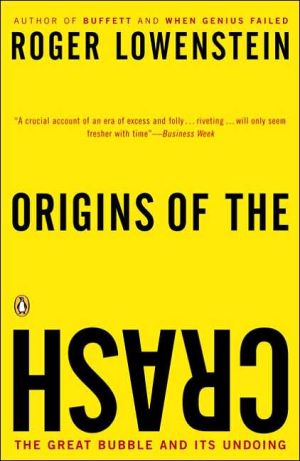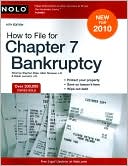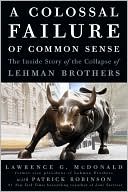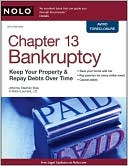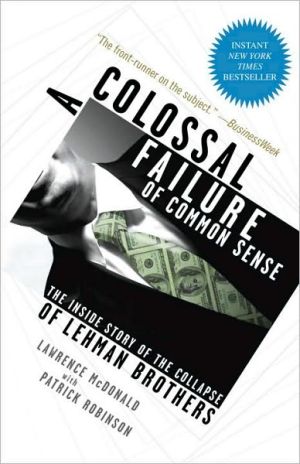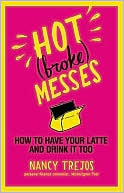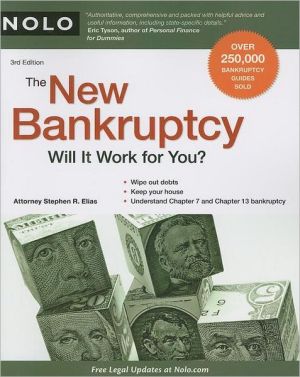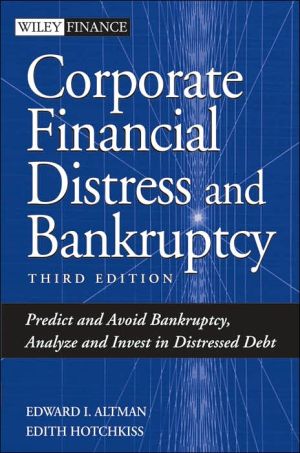Origins of the Crash: The Great Bubble and Its Undoing
With his singular gift for turning complex financial events into eminently readable stories, Roger Lowenstein lays bare the labyrinthine events of the manic and tumultuous 1990s. In an enthralling narrative, he ties together all of the characters of the dot-com bubble and offers a unique portrait of the culture of the era. Just as John Kenneth Galbraith’s The Great Crash was a defining text of the Great Depression, Lowenstein’s Origins of the Crash is destined to be the book that will frame...
Search in google:
With his singular gift for turning complex financial events into eminently readable stories, Roger Lowenstein lays bare the labyrinthine events of the manic and tumultuous 1990s. In an enthralling narrative, he ties together all of the characters of the dot-com bubble and offers a unique portrait of the culture of the era. Just as John Kenneth Galbraith's The Great Crash was a defining text of the Great Depression, Lowenstein's Origins of the Crash is destined to be the book that will frame our understanding of the 1990s. New York Times ...Mr. Lowenstein is at the top of his game.
In the 1970s, a candidate for president advanced the novel proposition that the money in the Social Security system should be funneled into, of all places, the stock market. The candidate’s name was Ronald Reagan. The incumbent president, Gerald Ford, had a good deal of fun with this evidently zany proposition. “I am not sure a lot of people would think it was a very good place to invest funds over the longer period of time,” Ford declared. His advisers had no trouble tarring the idea as kooky. The president likened it to “something dragged out of the sky.” If not certifiably alien, then it might even be—perish the thought—an example of “wild-eyed socialism,” which was no doubt something worse.\ Ford did not have to explain why he thought the stock market was not a safe place “over the longer period of time.” Stocks were considered simply too risky. Indeed, in 1976, the market was no higher than its level of eleven years before. Adjusted for inflation, the picture was far worse: The purchasing power of the average stock had fallen by two thirds. Even over the longer sweep of a half century, stocks had managed a gain of only 3.5 percent a year, so that people thought of the stock market as a place that went upward a little but sideways mostly, with wrenching nosedives along the way. Indeed, the number of Americans who owned stock would actually fall during the seventies by seven million.\ Such grim statistics were reflected in a certain distance between the market and people’s ordinary lives. Many newspapers carried at most a single account of the previous day’s action on Wall Street, and television barely covered it at all. Today, at my daughter’s middle school in New Jersey, an investing club is busily educating future market wizards, but in the seventies, through four years on an Ivy League campus, I didn’t hear a mention of the stock market. Professors spoke darkly of America’s economic interests, but if any of those interests happened to be corporations with publicly traded shares, it was a detail that went unspoken.\ Unlike in the nineties, when people would become accustomed to faithfully adding a little bit to mutual funds, rain or shine, every month, in the seventies, they withdrew a little bit, month after month, and they did so for eight long years. For Wall Street it was one long night, one long depression. Even the pros who managed pension funds were little more interested in stocks than my professors were. By 1979, of the money managed by pension funds, 90 percent was invested not in stocks but in bonds, bills and cash, which was practically like stuffing it under a mattress. That summer, BusinessWeek sized up America’s non-love affair with the stock market in a morbid, and instantly famous, cover story—“The Death of Equities.”\ But equities were not dead, only dormant. And the renaissance began in short order. Three months after the article, mutual funds—finally—took in more money from investors than they redeemed. The net addition was a trifle—a mere $12 million. But deep in the giant furnace room where the economy is engineered, a long-stuck wheel had emitted a creak, shaken off its cobwebs, and, finally, turned. People were buying stocks.\ Over time, this little shift, this rediscovered habit that would ripen into a passion, would affect far more than the Dow Jones average. When investors awoke, executives found that they, too, inhabited a different world. The rules soon changed for auditors and analysts and ordinary savers as well—an entire culture was retailored. By the late 1990s, America would become more sensitive to markets, more ruled by markets, than any country on earth.\ This was the culture that would lead to prosperity and also to Enron. Markets would become virtually sovereign—unchecked by corporate watchdogs or by government. Distortions would follow, and with the temptation of wealth that distortions brought, corruption. But in the late seventies, no one was thinking of markets as powerful or pervasive. The country’s problem was that it was too insensitive, too unresponsive, to markets. They were not hyperactive or feverish then, but—potentially—a cure.
Acknowledgmentsix1Origins of a Culture12Early Nineties--A Culture Is Rich153Enlightenment Gets out of Hand354Number Games555Doormen at Noon796New Economy, Old Errors1017Enron1278Bankrupt1579Year of the Locusts18910Epilogue217Notes227Index259
\ BusinessWeekThis book has the power to keep readers burning the Itty Bitty book light until the wee hours...\ \ \ \ \ New York Times...Mr. Lowenstein is at the top of his game.\ \ \ NY Times Book ReviewLowenstein's title may convey the impression that his book is mainly about stock prices. It isn't: it's about the epidemic of corruption that spread through corporate America in the 1990's, though that epidemic was in part both an effect and a cause of the bull market. A better title might have been ''Executives Gone Wild.'' As Lowenstein, also the author of Buffett and When Genius Failed, explains, not that long ago the orthodoxy at business schools -- one that corporate management found highly persuasive -- was that the trouble with American executives was that they didn't make enough money. Or, to be more precise, the problem was that they didn't stand to gain enough if their companies did well. The most famous of the business-school theorists, Harvard's Michael Jensen, wrote in 1990 that ''corporate America pays its most important leaders like bureaucrats. Is it any wonder, then, that so many C.E.O.'s act like bureaucrats?'' — Paul Krugman\ \ \ \ \ Publishers WeeklyWell-known financial journalist Lowenstein (Buffett; When Genius Failed) sets out to explain the stock market crash of 2000 and the ensuing corporate scandals. The ingredients are familiar: executive overcompensation and stock options, irrationally exuberant shareholders, friendly auditors, short-term focus by financial professionals and overemphasis on shareholder value. The author puts his unique stamp on these factors by juxtaposing them so brilliantly that the 20-year history that inflated the bubble seems not just understandable, but inevitable. The story is traced from the doldrums of the 1970s through the raiders and junk bonds of the 1980s to the financial brave new world of the 1990s. In self-conscious parallel to John Kenneth Galbraith's The Great Crash, Lowenstein explains that it is the boom that needs to be explained; the crash is simply the natural consequence. Lowenstein's low-key ease with the most complex financial reporting makes this book both accurate and easy to read, just as his earlier Buffett revealed a fascinating character where other writers saw only dullness, and his Where Genius Failed was a very comprehensible account of the 1998 Long-Term Capital Management blowup. (Jan.) Forecast: The author has two bestsellers to his credit on topics of much narrower interest. Unless the stock market jumps 20% before publication, this could be the top financial book of 2004. Copyright 2003 Reed Business Information.\ \ \ \ \ Library JournalLowenstein, a well-known author and financial columnist, has crafted a lively and readable account of the last 30 years on Wall Street. Starting with the creation of 401(k) accounts, proceeding through the boom years of the 1990s, and then moving to the downfall of Enron and its brethren, he ties in the various factors that have inexorably led us to where we are today. While none of this is new information, Lowenstein includes enough personal details to make it seem fresh and interesting. The last chapters are particularly relevant, covering the fallout when the various deals and compensation scandals came to light. The effect of 9/11 on the government and the country in general is also touched on, particularly with regard to the rising budget deficit. Finally, an epilog discusses the fines and reforms (including the Sarbanes-Oxley Act of 2002) that resulted from the various debacles and opinions about what else must be done. The book is heavily documented throughout with quotes and sources, making it authoritative as well as informative. Recommended for public libraries.-Susan Hurst, Miami Univ. of Ohio, Oxford Copyright 2003 Reed Business Information.\ \ \ \ \ Kirkus ReviewsA wide-ranging examination of the stock-market boom of the 1990s and its resounding crash. Ken Lay, Jack Welch, Steve Case, and their ilk may have been the guys who burst the great bubble. But, writes former Wall Street Journal reporter and current Smart Money columnist Lowenstein, "It was not merely that many companies, or many Wall Street operators, misbehaved; it was that the very culture encouraged the misbehavior and was, in large measure, its accomplice." Whereas Americans had fled the market in droves in the stagflationary '70s (by 1979, Lowenstein notes, most of the money held in pension funds was in "bonds, bills, and cash, which was practically like stuffing it under a mattress") and had only reluctantly come back in the '80s, by the end of the first Bush administration they would embrace the stock market wholeheartedly, so much so as to be ruled by it. With that change of attitudes and allocations and the concomitant demand that the market make everyone rich, as bullish '90s boomers promised, the whole world of finance changed: auditors, analysts, and accountants came under extraordinary demands to fudge the books, and the ever-evolving procedures of federal watchdog agencies seemed calculated to encourage them to do so. Cries for reform were sounded throughout the period, Lowenstein notes, but efforts to square the books were quashed by the likes of Sen. Joseph Lieberman, "a big recipient of Wall Street and accounting industry contributions" who is now talking a good game about cleaning house. Meanwhile, CEO salaries swelled, companies that "were worthless from start to finish came to be valued in the billions of dollars," and honest financial reports became objects ofexquisite rarity-all aspects of madness-of-crowds behavior that Alan Greenspan's phrase "irrational exuberance" only begins to cover, but that Lowenstein describes in pointed detail. Are there any lessons to be drawn? Yes, many. But as long as the culture "tolerates lying, even in seemingly marginal ways," Lowenstein suggests, the great humbling of 2002 may foretoken worse to come. Author tour. Agent: Melanie Jackson\ \
